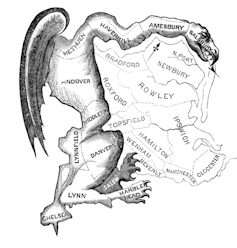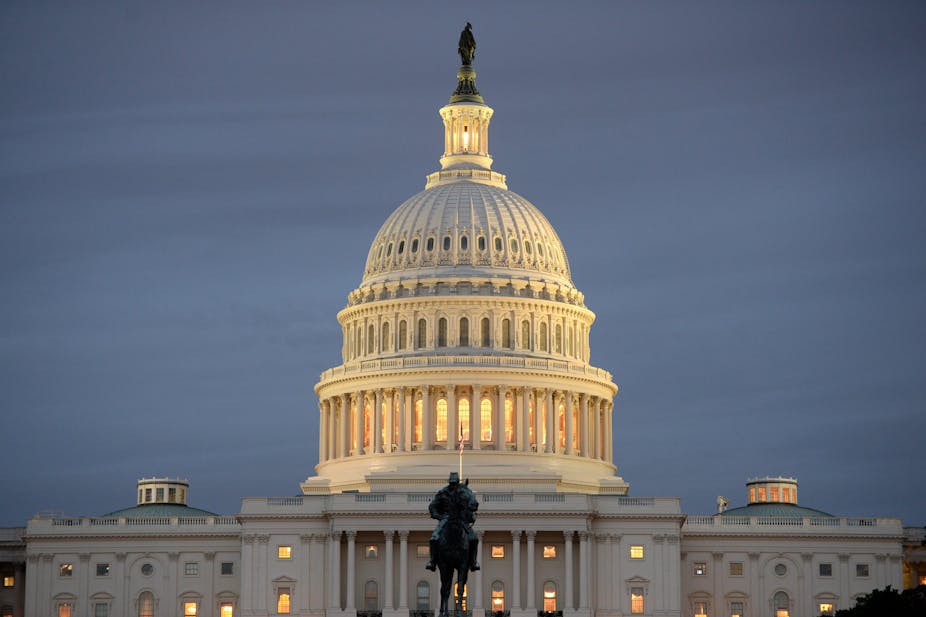If the polls are correct, the headlines on November 5 following the US midterm elections will proclaim that Democrats have suffered a major defeat. The Democrats will likely lose the Senate. President Barack Obama will be confronting a unified Republican Congress for the final two years of his term.
However, some progressive political operatives are already declaring an early victory. A very early victory, because – if it happens – it won’t be visible until 2022.
Midterm American elections draw little coverage internationally as compared to the presidential contest and congressional races that happen to fall during those years. Nonetheless, the campaigns that take place halfway through presidential terms are highly significant.
While every seat in the House and one-third of the Senate are up for grabs every two years, it is often overlooked abroad that elections for governor, state officers and legislatures of 36 of the 50 states happen at the same time.
This matters even to Americans living outside those states. In most American states, the state legislature draws the maps for both state and federal legislative districts. The road to control of Washington runs through Harrisburg, Lansing and Tallahassee (the state capitals of Pennsylvania, Michigan and Florida).
National political organisations are increasingly becoming involved in local community elections for state legislatures. They are bringing newly deregulated mountains of campaign cash with them, even in states that are generally not major presidential year battlegrounds.
Their donors hope to enact favourable legislation at the state level, an arena that has become particularly salient in the wake of the decisions by many Republican-dominated states to block forms of expanded health-care coverage in the Obamacare era. Some are even taking their lobbying muscle to countries like the United Kingdom and Australia.

But lobby groups are also playing an intensified long game for control of the federal government, and by extension global governance in areas such as climate change. While decades of judicial intervention has led to electoral maps that discriminate on the basis of race being tossed – including as recently as this year in Virginia – a 2004 Supreme Court ruling cleared the way for legislatures to draw districts to achieve partisan outcomes.
Malapportionment, called “gerrymandering” in the US after an 1812 editorial cartoon about one purportedly salamander-shaped district pushed by Massachusetts governor Elbridge Gerry, is nothing new. But in the 21st century, politicians are picking the voters, and not the other way around. State legislatures have a green light to play partisan hardball, and have ever-more sophisticated micro-targeting means to do so.
Normally, both state and congressional district maps are redrawn after the US Census Bureau reports data from the decennial population study. In the last two cycles (2001 and 2011), Republicans gained a significant advantage in Congress because big-wave midterm elections in 1994 and 2010 had swept them into power in a number of state capitols, where they used and misused their redistricting power.
By some estimates, the current Republican majority in the House of Representatives is attributable to a margin created by gerrymandering.
In 2012, Republicans maintained their majority in the House even though 1.5 million more Americans voted for a Democrat. In the battleground states of Florida, Michigan, Ohio, Pennsylvania, Virginia and Wisconsin, the voters selected Obama and the Democratic nominee for Senate, but Republicans hold the majority – even three-quarters – of the seats in each state’s House delegation.
Until the maps are redrawn in 2021, Democrats would need landslide wins of more than 8% nationally to retake the House. Even if Hillary Clinton were to win a decisive victory in 2016 and pull enough Democrats on her coattails to win back Congress, they would almost certainly lose the House again in 2018.
And that’s why operatives on both sides are now battling for control of Congress in the 2020s in the state elections of 2014. When control of a state legislature flips, the impact on its US Congressional delegation after the maps are redrawn can be dramatic. This was demonstrated in 2012 by Democrats in Illinois and Republicans in North Carolina.
But Democrats do not need to retake all of those state legislatures to score gains. In most states where the legislature draws the maps, the governor must sign them. If the state cannot agree on a map, the process is turned over to the courts.

In either case, if Democrats win the governorships in battleground states, their fortunes in the House improve considerably. Simply evenly dividing the House delegations of the six aforementioned battleground states where they are currently gerrymandered would give Democrats 17 of the 19 seats they need to win a majority.
While the polls show that Democrats are poised to lose several Senate seats in 2014, they also indicate that the party has a good shot of picking up several governorships. And because incumbents rarely lose in the US barring a big-wave election, they would be favoured to win re-election in 2018 and be in a position to veto Republican-friendly maps after the next census.
So, while Democratic activists bemoan the loss of the Senate – at least until what is expected to be a good year based on the 2016 map of seats up for election – a number are warming up for victory laps based on governorship outcomes.
The late Speaker of the House, Tip O’Neill, around whose Boston district the gerrymander once curled, is credited with the observation that “all politics is local”. While there may be a comparatively small audience watching the 2014 elections play out at the state level, the politicos already fighting the next decade’s battles agree wholeheartedly.

